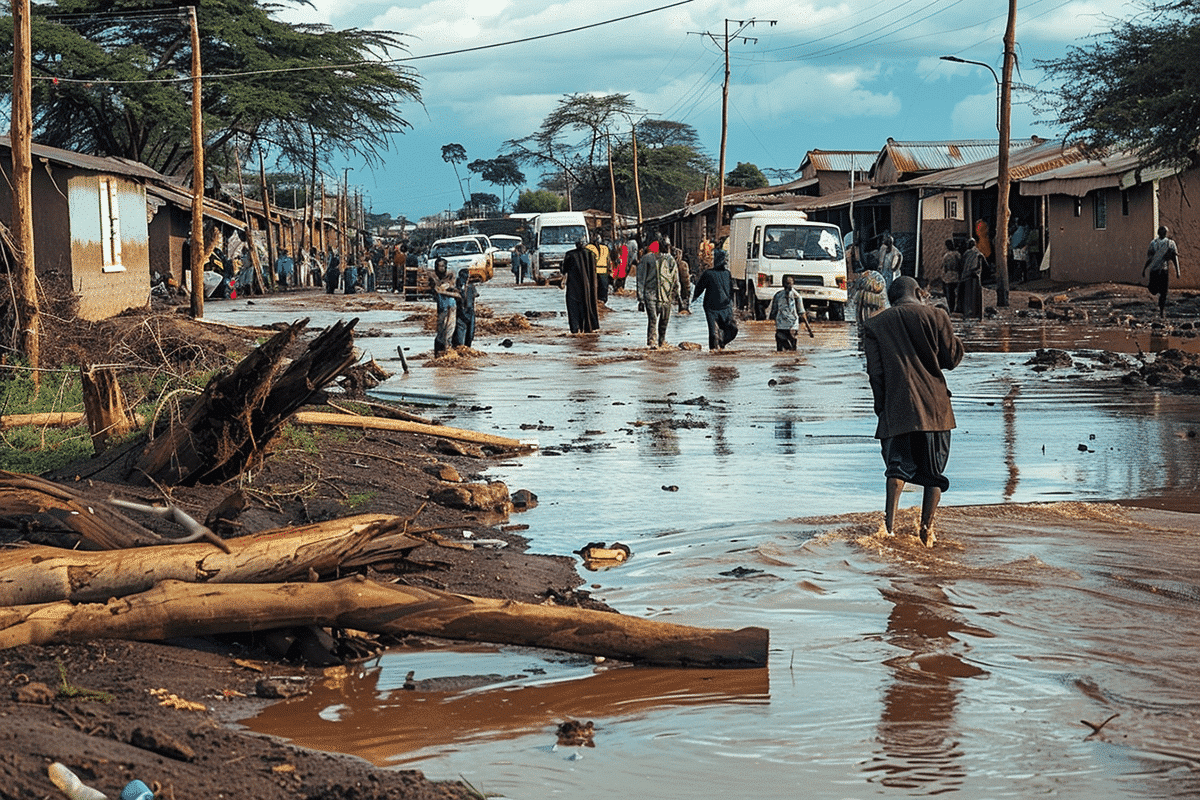At least 45 people have tragically lost their lives in western Kenya as a result of a devastating dam collapse following heavy rains. The incident occurred in the early hours of Monday, shaking the Mai Mahiu area of the Great Rift Valley region to its core. A massive wall of water surged through homes, while debris blocked major roadways, paralyzing transportation routes and endangering countless lives.
The Old Kijabe Dam, situated in an area prone to flash floods, gave way under the relentless pressure of rainfall, unleashing a torrent of water, mud, rocks, and uprooted trees downstream. The aftermath of this catastrophe has left families shattered, with 45 confirmed fatalities and numerous others missing. Emergency services, including the Kenya Red Cross, have mobilized to assist the injured, with 109 individuals receiving hospital treatment and 49 still unaccounted for.
The grim toll of this disaster adds to the already staggering losses from ongoing floods across Kenya. Since mid-March, nearly 100 lives have been claimed by the relentless deluge, prompting the postponement of school openings and wreaking havoc on communities across the country. The Meteorology Department has issued warnings of further rainfall, exacerbating an already dire situation.
In response to this crisis, Kenya’s Interior Minister has ordered the immediate inspection of all public and private dams and water reservoirs within a 24-hour timeframe, aimed at averting future tragedies. Recommendations for evacuations and resettlement are expected to follow these inspections, underscoring the urgent need for proactive measures to safeguard vulnerable communities.
Meanwhile, motorists have been cautioned to brace for heavy traffic and debris as they navigate the roads around Naivasha and Narok, west of the capital, Nairobi. The Kenya National Highways Authority has issued alerts to ensure the safety of travelers amidst the chaos caused by the collapsed dam.
The repercussions of the disaster extend beyond Kenya’s borders, with the wider East African region grappling with its own flooding crisis. In neighboring Tanzania, 155 lives have been lost to floods, while over 200,000 people in Burundi have been affected by the deluge, underscoring the regional scale of the calamity.
Closer to home, a boat capsized in Kenya’s northern Garissa county on Sunday night, adding to the tally of tragedies. Although 23 individuals were rescued by the Kenyan Red Cross, the fate of more than a dozen others remains uncertain, highlighting the perilous conditions facing communities across the country.
Even Kenya’s main airport has not been spared from the wrath of the floods, with the facility inundated by rising waters over the weekend. Videos circulated online depicted flooded runways, terminals, and cargo sections, forcing flight diversions and disrupting travel plans for countless passengers.
Amidst the chaos, over 200,000 people across Kenya find themselves grappling with the aftermath of the floods, their homes submerged and their lives upended. Seeking refuge in schools and other makeshift shelters, they face an uncertain future as they strive to rebuild their lives in the wake of this natural disaster.
In response to the urgent need for assistance, President William Ruto has directed the National Youth Service to provide land for use as a temporary camp for those affected by the floods, offering a glimmer of hope amidst the darkness that has engulfed so many lives.
As the nation mourns the lives lost and grapples with the immense challenges posed by the floods, the resilience and solidarity of the Kenyan people shine through, reminding us of the strength in unity in the face of adversity.




